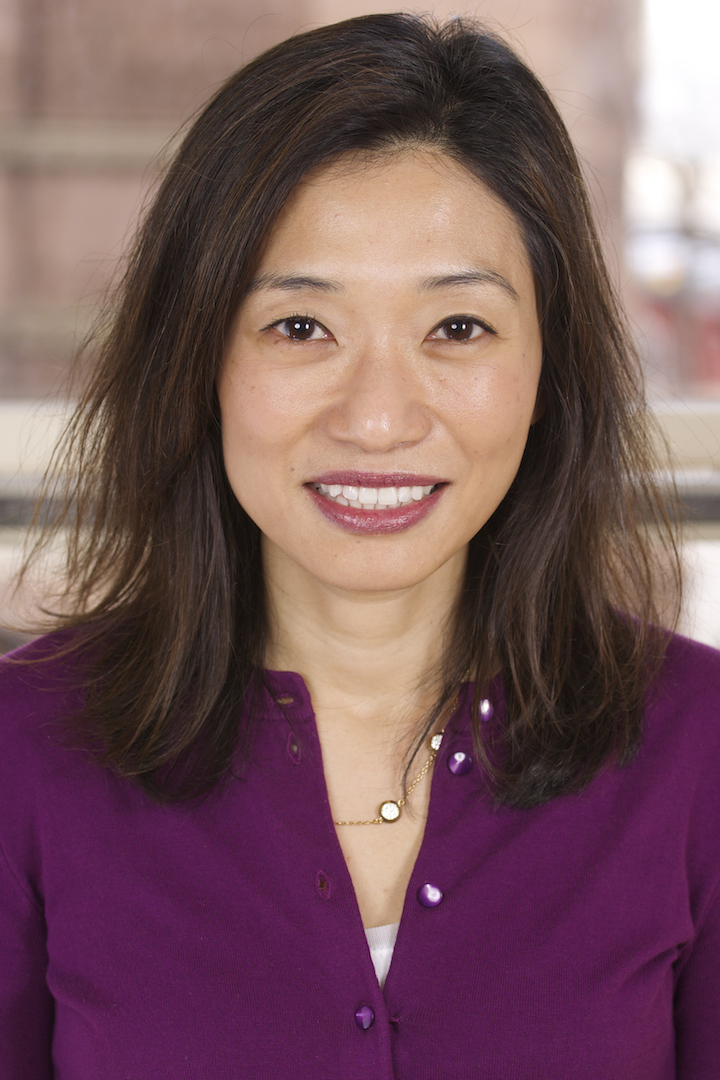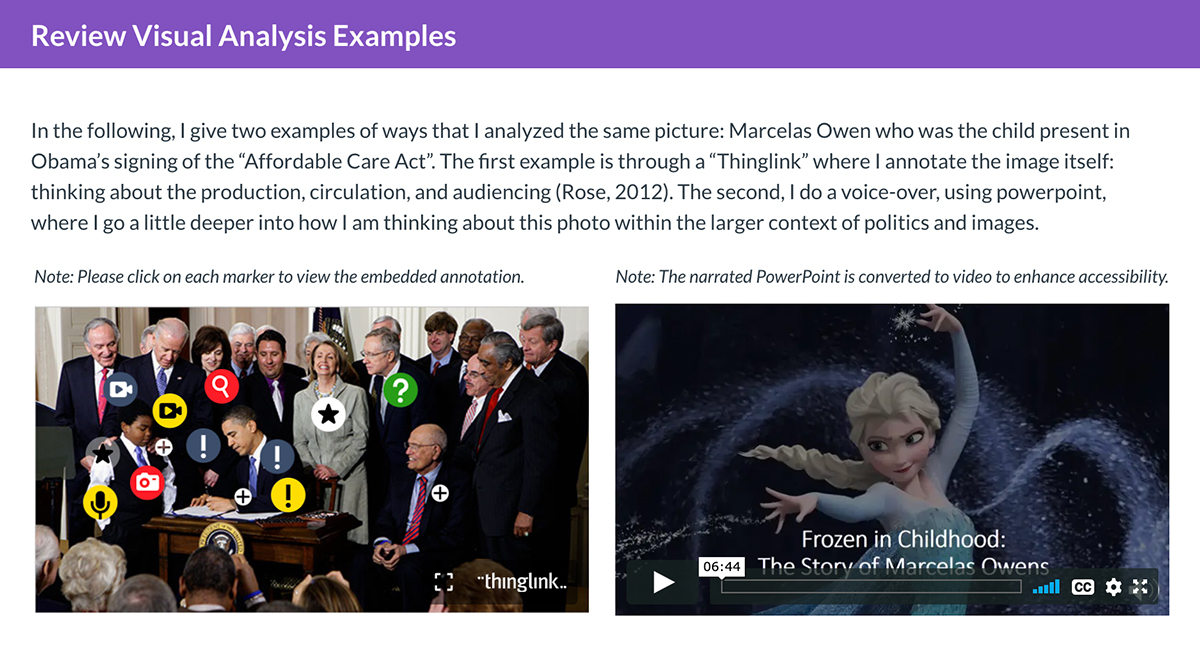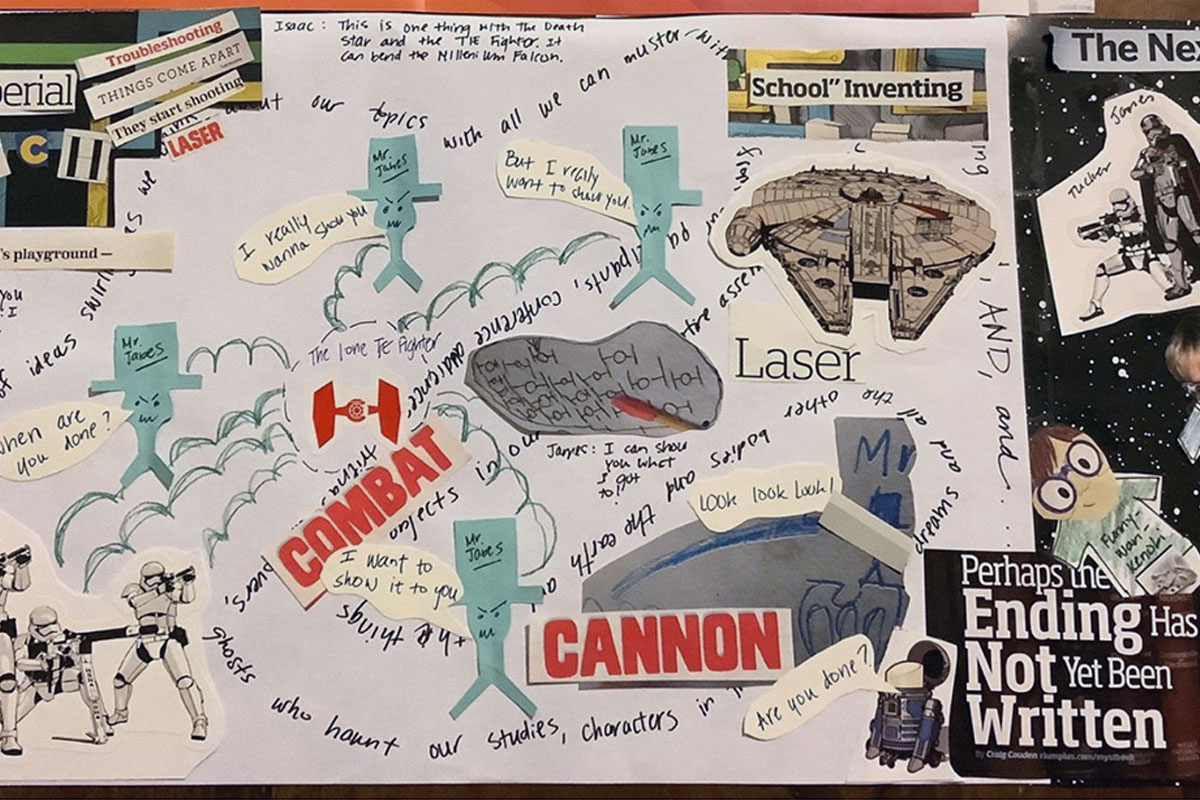Last summer, at the Reimagining Education Summer Institute, an annual Teachers College gathering at which K-12 educators from across the country reimagine education for a racially just society, TC faculty members Haeny Yoon and Detra Price-Dennis taught a course on public education in the digital age. The goal was to mobilize teachers as public intellectuals who voice ideas and initiate social action through digital tools.
Energized by the possibilities of teaching and learning in digital spaces, Yoon, Assistant Professor of Early Childhood Education, subsequently worked with TC’s Office of Digital Learning (ODL) to make her courses more interactive and meaningful online. Throughout the fall and winter, she opted for a hybrid format that combined in-person teaching with online modules. By refining her digital pedagogy, she was able to experiment with different formats, platforms, and experiences to enhance and extend face-to-face instruction.

ENERGIZED Yoon has embraced the possibilities of digital teaching, working with TC’s Office of Digital Learning to make her courses more interactive and meaningful online. (Photo: TC Archives)
“My courses included asynchronous modules [units in which students can absorb materials online, each at their own pace] that allowed us all to learn and communicate with one another prior to and after course meetings,” Yoon says. “As a result, I was able to really think about digital teaching as a pedagogical act to create purposeful, meaningful, different engagements.”
[Read “Mission Virtually Accomplished,” a story about the efforts of TC’s Office of Digital Learning to help faculty teach online. Read “Ready for Prime Time,” a story about the innovative digital teaching of Detra Price Dennis, Associate Professor of Education, and four other TC faculty members.]
The Digital File
This piece is part of an ongoing series spotlighting the efforts of TC faculty members to adapt and enhance their teaching in a new era of remote learning.
Neither Yoon nor the students enrolled in her courses knew it, but in effect they were undergoing a dress rehearsal for the enormous changes that have occurred since mid-March, when the COVID pandemic moved all TC classes fully online. Where many educators worry that teaching online is now less personal and dynamic, Yoon has become confident that the digital space can also support strong communication between her and her students.
When I contemplated teaching online, I thought about what that aesthetic experience of play might mean for students in higher education, and for myself...How could I utilize digital spaces in my own learning and seeing? How can I ‘make something new’ and transfer that sense of joy to my students?
—Haeny Yoon
“In a perfect world, the hybrid course, to me, would be an ideal model,” says Yoon.
Perhaps it is not surprising that Yoon, whose own research focuses on the play of very young children, has embraced digital teaching as a playful, experimental space.
“When I contemplated teaching online, I thought about what that aesthetic experience of play might mean for students in higher education, and for myself,” she says. She’s also drawn inspiration from the Chicago-based sculptor Theaster Gates, who, she says, “works at the intersection of art and social change.”

MAKING CONNECTIONS Yoon's students used an interactive tool called ThingLink to analyze images by digitally linking them to other images, videos, print materials and ideas. Yoon shared her own inquiry, “The 1992 Los Angeles Riots,” in which she pinned links to materials that included a National Public Radio story on the historical roots of racism and the recent rise of the white supremacy movement.
“Gates says, ‘I think I’ve been given the ability to see things. Not just the thing in front of me, but the potential inside the thing.’ So I’ve been thinking about what potential is there in this new thing? How could I utilize digital spaces in my own learning and seeing? How can I ‘make something new’ and transfer that sense of joy to my students?”
For example, in her Qualitative Data Analysis course, a course she taught remotely this past semester to doctoral students working on their research projects, Yoon encouraged the use of what she calls “poetic, artistic and multimodal techniques” for analyzing data. In one instance, using an interactive tool called ThingLink she asked students to analyze an image or collage by digitally linking the image to other images, videos, print materials, and ideas. As a model, Yoon shared her own recent inquiry into the “1992 Los Angeles Riots,” in which she pinned links to other videos, articles, and blog posts, including a National Public Radio story that looked at the historical roots of racism and rise of the white supremacy movement since 1992.
These assignments allowed students to linger and sit with the products others in the class created. As they provided one another with meaningful feedback, they were able to build real relationships in ways that might not have happened in the confined timespan of an in-person class.
—Haeny Yoon
As students explored the possibilities of multimodal analysis, “I encouraged them to look at how sound, image, movement, placement, and design work together to open their eyes and minds to new possibilities,” Yoon says. She also shared her own experimentation with film and animation (using the digital tools I-movie, Canva, and Flipgrid) to illustrate the different ways they might work in a collage, a film and a poetic reading.
It was fun and different — but just as important as the technology and the unorthodox assignments, Yoon says, was the resulting sense of “community and belonging.”
“These assignments allowed students to linger and sit with the products others in the class created. As they provided one another with meaningful feedback, they were able to build real relationships in ways that might not have happened in the confined timespan of an in-person class.”

IMAGE DECONSTRUCTION Yoon models the use of digital linking tools, PowerPoint and voiceover in exploring an image of youngster Marcelas Owen, who was present at the signing of the Affordable Care Act.
This past semester, Yoon also launched an informal weekly reading group with students in the course. “I really found that time to be valuable — it was so nice to just connect (virtually) with other humans. It was totally optional, but almost every week, more than half the class would participate on Zoom. And you really can’t create that sense of community without coming together in that synchronous space. The asynchronous modules gave students room to conceptualize their learning individually, but it still made sense for us to unpack ideas collectively in a less structured space as well.”
Yoon says that working online has given her broader insight into her students’ lives. “You start to realize that people's lives are complicated. Learning in an online environment like Zoom, where you glimpse people’s houses and everyday existence, is very different from a classroom environment.” The experience has given her more empathy for students’ social realities. Do they have proper access to resources? Do they need more support? “It means not ignoring the inequities that are out there. Some people's lives are tough. It’s important that students have the proper resources and leniency depending on their individual situation.”
There's more to learning than paper. Working online has pushed my students and me to think about what the final product is and to redefine what learning really is.
—Haeny Yoon
At this year’s Reimagining Education Summer Institute, Yoon, together with public school teacher and TC doctoral student Carmen Llerena, will once again teach a course on public pedagogy. This time around, of course, everyone will be teaching online — an experience she believes is critical for teachers taking the course.
“There's more to learning than paper,” she says. “Working online has pushed my students and me to think about what the final product is and to redefine what learning really is.”

